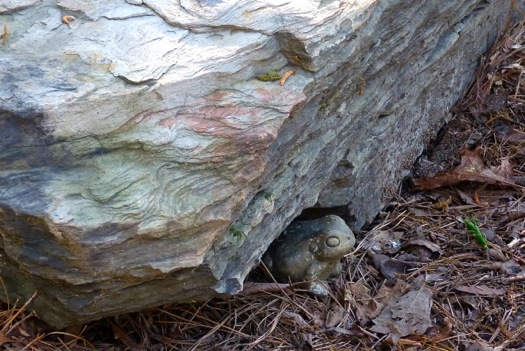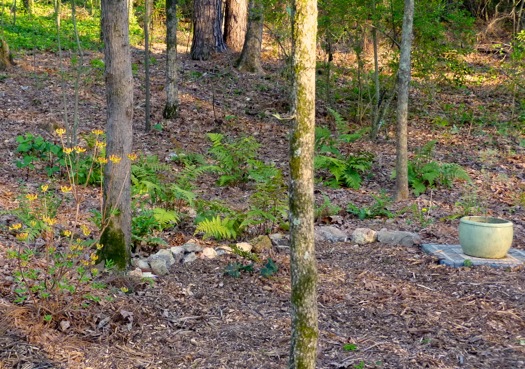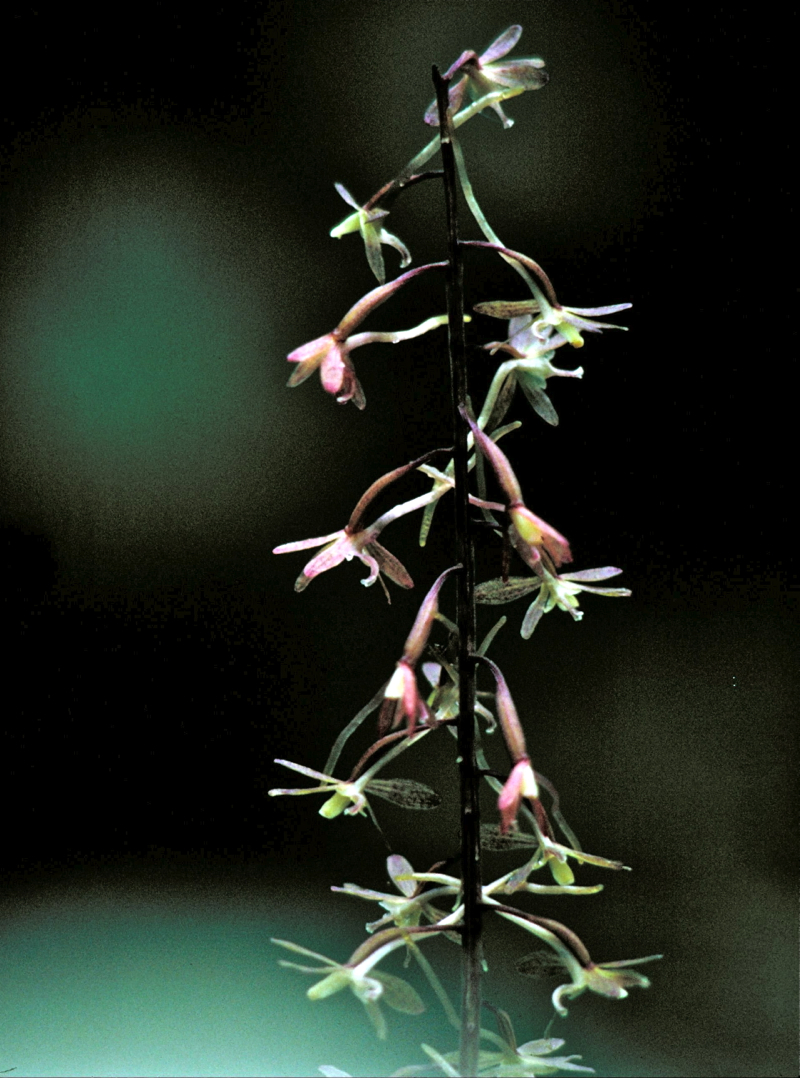Changes to the Woodland Garden: A New Sitting Area!
 Sunday, April 3, 2016 at 6:00AM
Sunday, April 3, 2016 at 6:00AM I have been busy in the woodland garden the last few weeks, work that involved a lot of muscle and a bobcat. I have long wanted to add a sitting area adjacent to the fern glade, and now it is done! It is not a large area, just big enough for two small chairs. The metal chairs are quite heavy and surprisingly comfortable, and the new area creates some badly needed structure in the space.
First, here is a before photo of the area.
This is what one now sees from the same spot. The sitting area is tucked to the right side of a large rock, which marks the entry to the sitting area and the path overlooking the fern glade. There is only a hint of the new space from this angle.
A trail leads from the main woodland path toward the fern glade and the new sitting area.
Here it is!
Did you notice the frog?

Plantings around the sitting area include native Phlox divaricata, Hosta Aureomarginata, Gumbo Azalea, Heucherella 'Yellowstone Falls', and some colorful Coleus. There is an old magazine rack, put to use holding potted New Guinea Impatiens.
I turned this rock on its end to create a more defined entry to the round space. Lou thinks it looks like a tombstone!
My fern glade has, at last count, 87 ferns, added over the past few years. Many are deciduous and are just now emerging from dormancy, so they are not very visible in these images. The concrete bench overlooks the glade. The fern glade is a large semicircular area, and I still need to add more ferns. I will have to publish another post on the fern glade when all of them are up and growing.

At the opposite end of the fern glade from the sitting area is a group of evergreen Autumn Fern:
There is a small 'Butterfly' Japanese maple in the pot, and there are also several fragrant native azaleas in the area. 
From the sitting area one also has a view of the new woodland path that started it all, back in 2010. Since I published that post, I have eliminated most of the mahonia and nandina in the woodland garden. Both proved to be horribly invasive, and I still pull seedlings every year. This project is a good illustration of the snowball effect! You may also enjoy reading my post Planting a Fern Glade, published in 2012, to get a perspective on progress in this part of the woodland garden, as well as My Decision, in which I write about eliminating the mahonia and nandina. I enjoyed going back and reading these old posts, then looking at what my woodland garden has become.
This project is a good illustration of the snowball effect! You may also enjoy reading my post Planting a Fern Glade, published in 2012, to get a perspective on progress in this part of the woodland garden, as well as My Decision, in which I write about eliminating the mahonia and nandina. I enjoyed going back and reading these old posts, then looking at what my woodland garden has become.
